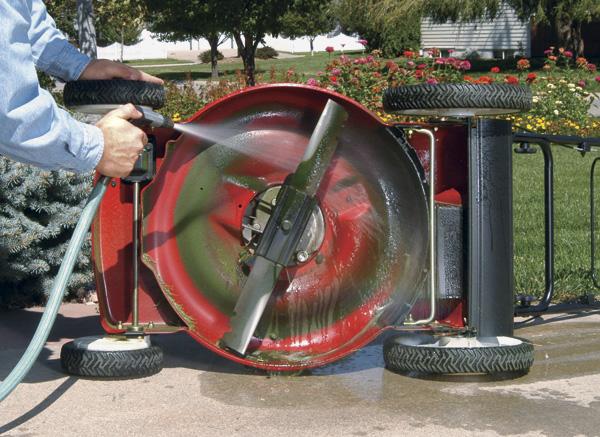Organic Landscaping: Maintenance Of Mowers
Lawn mowers are arguably the most common gardening tools found in the shed of every house with a garden. Professional landscapers use also use them, even if they prefer high-performance models and their units are therefore more powerful. Many different types of mowing machines exist, but we all know the major ones: push, rotary, riding mowers. Although you probably use and store them the right way, you should still perform a few additional tasks regularly. Some of them may be annoying - but in turn, your equipment will be in top working condition throughout the year.
Sharpen The Blades
First of all, how to tell if blades are dull? The easiest way is to look at the grass after trimming and see if you're getting a clean cut. If the area top looks whiter then usual – it's a sure sign that blades need to be sharpened. If you don't do so on time you will end up with a bad-looking lawn and eventually a lack of balance that slowly damages the whole engine because of the strong vibrations. So, these are the steps for the most common (rotary) type:
- Make sure there is almost no fuel in the tank, so that nothing will be spilled when you tip the machine to the side.
- Take out/disconnect the spark plug for security reasons.
- Use a wrench to unscrew the nut and take the blade off the mower.
- Set the blade firmly in the vise and sharpen it as you go from the outer edge towards the center. Keep the existing angle while working or, if it's really damaged badly, try to go around 30 degrees.
- Once you're finished, check the blade for balance. Remove some more metal where/if necessary – you need to make sure that no side is heavier than the other.
Keep in mind that reel blades are not recommended to be sharpened at home.
Engine Care
Not much to do here, fortunately. It's best to follow manufacturer's instructions if you have them handy. If not, just be sure to change the oil after every 20-25 hours of mowing. Also, clean up air filter/s together with the oil refill.
Cleaning
If you have a push-type mower, grab a putty knife and scrape off parched grass clippings and other dirt. Wash down the whole unit with the garden hose. Experts in residential landscaping from Sydney remind that you should always lubricate visible metal parts (including the blades) right after the rinsing, once the surface is completely dry.
For electrical models – clean up all areas surrounding the openings and get rid of grass and other particles found on the cooling fans to prevent excessive heating of the engine. You are allowed to apply a mix of hot water and household dish-washing liquid on the external surface if it's very dirty, then let it dry naturally. Tip your landscaping tool to one side in order to remove the grass stuck to the bottom – use a power nozzle if you need to.




0 Comments
Recommended Comments
There are no comments to display.